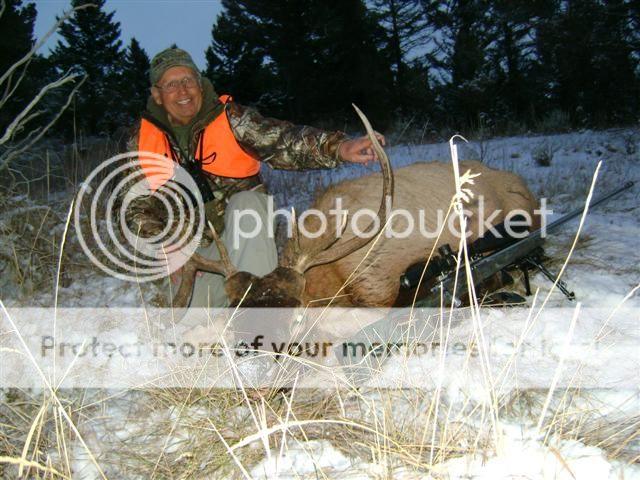elkaholic
Well-Known Member
I've just read this thread with great interest. First, congratulations Jeff on some excellent shooting and reporting of your results. This is just the thing that gives me the opinion that the forums are a benefit to the shooting sports.
I've read several comments and questions about the difference in the thickness of the jackets. Let me provide those reading this thread with some information that may be helpful.
The only reason the thicker jacket was produced was to eliminate a problem that competition target shooters were having with bullets failing to make it to the target during a match. Competition target shooters tend to use long barrels, hot loads, and will shoot several shots (20 or more) quickly in a race against changing conditions.
Also, during a match, these shooters will put over 100 rounds down range without cleaning the barrel and they frequently do it during hot days with their gear out in the bright sun. These conditions produce a situation where the friction and heat inside the barrel increases.
This increased friction can reach a point where it actually melts the core inside the jacket. Once any portion of the core becomes liquid, this dense material will actually tear the jacket off the bullet. When this happens the bullet can't maintain its trajectory resulting in a miss.
This is a condition we had to resolve. We found that making the jacket slightly thicker produced an interesting result. It didn't make the jacket stronger (to contain the molten lead) but it actually moves the lead further away from the source of heat (rifling) preventing the core from melting in the first place.
We solved this particular situation after we came to understand that our bullets are very effective on game. So once the issue was solved for the competition target shooters we had another question to answer. How will this slightly thicker jacket work on game? The more important question we needed to resolve is; do we have to make two different bullets? Frankly, it would be easier on us (and our customers) if we didn't have to make two different bullets because this does create confusion.
We went to work on testing the two jacket thicknesses using the same bullet. For our testing we used the Bullet Test Tube which is a wax media that we use regularly due to the fact that it holds the wound cavity rather than collapsing like ballistic gelatin.
In every comparison test, the thicker jacket produced a smaller wound channel (in volume measured by putting water into the cavity and measuring the amount). Since our bullet works so well due to the size of the wound cavity it creates it was decided that we are compelled to make both bullets.
It is accurate to say that the difference is small but we come from the world of benchrest shooting where every .001 matters. If the thinner jacket is slightly better at creating a larger wound channel than the thicker jacket then it is better. The question is answered in our minds.
As Jeff and many others have discovered, the thicker jacketed Target bullet can kill quickly. This is especially true with proper shot placement. Having said that, I am also faced with the reality that not all hunters are as capable as Jeff and the many others on this forum. For this reason we are compelled as a company to communicate a general recommendation that the Target bullets aren't recommended for hunting.
Something to keep in mind is that this is the same thing we said about our VLD bullets for decades. If it wasn't for guys like Jeff, John Burns and the many others who told us we had it wrong, we would never have learned that they do in fact work very well on game.
Again, I thank Jeff for his thorough testing and I'll relay that everyone reading this thread is benefitting from what I regard as the real benefit of shooting forums. Shooters helping shooters learn more about the activity they enjoy.
Regards,
Eric
Eric......thank you for the informative post! I have a question that I hope you can shed some light on? I am a believer that rotational velocity has a greater imact on bullet performance than it is given credit for. When I do bullet tests, I often use reduced loads at close range for obvious reasons but I am becoming more convinced that this may not be giving a good read in all cases and "it seems" that maybe the hollow point bullets are upset more by this than others? Have you done any testing with this and do you have an opinion? I HAVE seen some tests where identical 30 caliber bullets were fired at the same velocity with considerably different twist and the wound channels were remarkably different. I'm thinking that this could well be the reason that when I tested the bullets in water with reduced loads, the result was different. What say you?.......thanks/Rich





